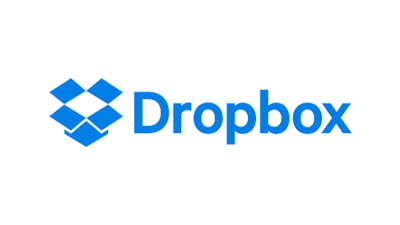5th generation wireless systems, abbreviated 5G, are improved wireless network technologies deploying in 2018 and later. The primary technologies include: Millimeter wave bands (26, 28, 38, and 60 GHz) offer performance as high as 20 gigabits per second; Massive MIMO (Multiple Input Multiple Output - 64-256 antennas) offers performance "up to ten times current 4G networks;" "Low-band 5G" and "Mid-band 5G" use frequencies from 600 MHz to 6 GHz, especially 3.5-4.2 GHz. E2E network slicing is a foundation to support diversified 5G services and is key to 5G network architecture evolution. Based on NFV and SDN, physical infrastructure of the future network architecture consists of sites and three-layer DCs. Sites support multiple modes (such as 5G, LTE, and Wi-Fi) in the form of macro, micro, and pico base stations to implement the RAN real time function. These functions have high requirements for computing capability and real time performance and require the inclusion of specific dedicated hardware. Threelayer cloud DC consists of computing and storage resources. The bottom layer is the central office DC, which is closest in relative proximity to the base station side. The second layer is the local DC, and the upper layer is the regional DC, with each layer of arranged DCs connected through transport networks. According to diversified service requirements, networks generate corresponding network topologies and a series of network function sets (network slices) for each corresponding service type using NFV on a unified physical infrastructure. Each network slice is derived from a unified physical network infrastructure, which greatly reduces subsequent operators' network construction costs. Network slices feature a logical arrangement and are separated as individual structures, which allows for heavily customizable service functions and independent O&M. According to our (Global Info Research) latest study, the global 5G Infrastructure market size was valued at USD 5736.4 million in 2022 and is forecast to a readjusted size of USD 20670 million by 2029 with a CAGR of 20.1% during review period. The influence of COVID-19 and the Russia-Ukraine War were considered while estimating market sizes. Global 5G Infrastructure key players include Qualcomm (US), Intel (US), Ericsson (SE), Samsung (KR), NEC (JP), Cisco (US), Qorvo (US), Huawei (CN), etc. This report is a detailed and comprehensive analysis for global 5G Infrastructure market. Both quantitative and qualitative analyses are presented by company, by region & country, by Type and by Application. As the market is constantly changing, this report explores the competition, supply and demand trends, as well as key factors that contribute to its changing demands across many markets. Company profiles and product examples of selected competitors, along with market share estimates of some of the selected leaders for the year 2023, are provided. Key Features: Global 5G Infrastructure market size and forecasts, in consumption value ($ Million), 2018-2029 Global 5G Infrastructure market size and forecasts by region and country, in consumption value ($ Million), 2018-2029 Global 5G Infrastructure market size and forecasts, by Type and by Application, in consumption value ($ Million), 2018-2029 Global 5G Infrastructure market shares of main players, in revenue ($ Million), 2018-2023 The Primary Objectives in This Report Are: To determine the size of the total market opportunity of global and key countries To assess the growth potential for 5G Infrastructure To forecast future growth in each product and end-use market To assess competitive factors affecting the marketplace This report profiles key players in the global 5G Infrastructure market based on the following parameters - company overview, production, value, price, gross margin, product portfolio, geographical presence, and key developments. Key companies covered as a part of this study include Qualcomm (US), Intel (US), Ericsson (SE), Samsung (KR) and NEC (JP), etc. This report also provides key insights about market drivers, restraints, opportunities, new product launches or approvals, COVID-19 and Russia-Ukraine War Influence. Market segmentation 5G Infrastructure market is split by Type and by Application. For the period 2018-2029, the growth among segments provide accurate calculations and forecasts for consumption value by Type and by Application. This analysis can help you expand your business by targeting qualified niche markets. Market segment by Type Femtocell Pico Cell Micro Cell Macro Cell Market segment by Application Smart Home Autonomous Driving Smart Cities Industrial IoT Smart Farming Healthcare and Mission Critical Applications Logistics and Shipping Security and Surveilance Market segment by players, this report covers Qualcomm (US) Intel (US) Ericsson (SE) Samsung (KR) NEC (JP) Mediatek (TW) Cisco (US) Marvell Qorvo (US) Huawei (CN) Market segment by regions, regional analysis covers North America (United States, Canada, and Mexico) Europe (Germany, France, UK, Russia, Italy, and Rest of Europe) Asia-Pacific (China, Japan, South Korea, India, Southeast Asia, Australia and Rest of Asia-Pacific) South America (Brazil, Argentina and Rest of South America) Middle East & Africa (Turkey, Saudi Arabia, UAE, Rest of Middle East & Africa) The content of the study subjects, includes a total of 13 chapters: Chapter 1, to describe 5G Infrastructure product scope, market overview, market estimation caveats and base year. Chapter 2, to profile the top players of 5G Infrastructure, with revenue, gross margin and global market share of 5G Infrastructure from 2018 to 2023. Chapter 3, the 5G Infrastructure competitive situation, revenue and global market share of top players are analyzed emphatically by landscape contrast. Chapter 4 and 5, to segment the market size by Type and application, with consumption value and growth rate by Type, application, from 2018 to 2029. Chapter 6, 7, 8, 9, and 10, to break the market size data at the country level, with revenue and market share for key countries in the world, from 2018 to 2023.and 5G Infrastructure market forecast, by regions, type and application, with consumption value, from 2024 to 2029. Chapter 11, market dynamics, drivers, restraints, trends, Porters Five Forces analysis, and Influence of COVID-19 and Russia-Ukraine War Chapter 12, the key raw materials and key suppliers, and industry chain of 5G Infrastructure. Chapter 13, to describe 5G Infrastructure research findings and conclusion.
1 Market Overview 1.1 Product Overview and Scope of 5G Infrastructure 1.2 Market Estimation Caveats and Base Year 1.3 Classification of 5G Infrastructure by Type 1.3.1 Overview: Global 5G Infrastructure Market Size by Type: 2018 Versus 2022 Versus 2029 1.3.2 Global 5G Infrastructure Consumption Value Market Share by Type in 2022 1.3.3 Femtocell 1.3.4 Pic









